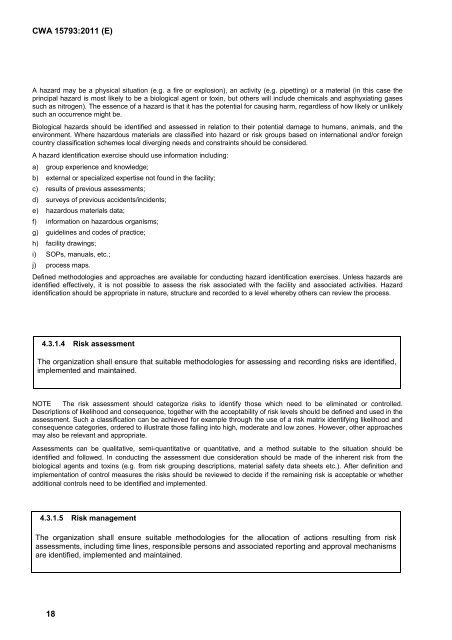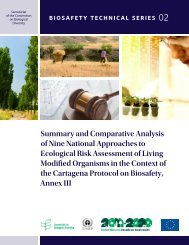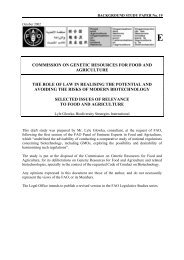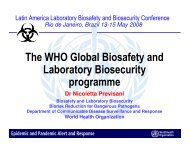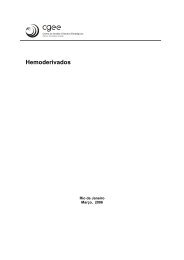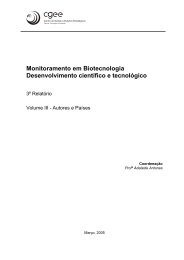CEN WORKSHOP AGREEMENT CWA 15793
CEN WORKSHOP AGREEMENT CWA 15793
CEN WORKSHOP AGREEMENT CWA 15793
You also want an ePaper? Increase the reach of your titles
YUMPU automatically turns print PDFs into web optimized ePapers that Google loves.
<strong>CWA</strong> <strong>15793</strong>:2011 (E)<br />
A hazard may be a physical situation (e.g. a fire or explosion), an activity (e.g. pipetting) or a material (in this case the<br />
principal hazard is most likely to be a biological agent or toxin, but others will include chemicals and asphyxiating gases<br />
such as nitrogen). The essence of a hazard is that it has the potential for causing harm, regardless of how likely or unlikely<br />
such an occurrence might be.<br />
Biological hazards should be identified and assessed in relation to their potential damage to humans, animals, and the<br />
environment. Where hazardous materials are classified into hazard or risk groups based on international and/or foreign<br />
country classification schemes local diverging needs and constraints should be considered.<br />
A hazard identification exercise should use information including:<br />
a) group experience and knowledge;<br />
b) external or specialized expertise not found in the facility;<br />
c) results of previous assessments;<br />
d) surveys of previous accidents/incidents;<br />
e) hazardous materials data;<br />
f) information on hazardous organisms;<br />
g) guidelines and codes of practice;<br />
h) facility drawings;<br />
i) SOPs, manuals, etc.;<br />
j) process maps.<br />
Defined methodologies and approaches are available for conducting hazard identification exercises. Unless hazards are<br />
identified effectively, it is not possible to assess the risk associated with the facility and associated activities. Hazard<br />
identification should be appropriate in nature, structure and recorded to a level whereby others can review the process.<br />
4.3.1.4 Risk assessment<br />
The organization shall ensure that suitable methodologies for assessing and recording risks are identified,<br />
implemented and maintained.<br />
NOTE The risk assessment should categorize risks to identify those which need to be eliminated or controlled.<br />
Descriptions of likelihood and consequence, together with the acceptability of risk levels should be defined and used in the<br />
assessment. Such a classification can be achieved for example through the use of a risk matrix identifying likelihood and<br />
consequence categories, ordered to illustrate those falling into high, moderate and low zones. However, other approaches<br />
may also be relevant and appropriate.<br />
Assessments can be qualitative, semi-quantitative or quantitative, and a method suitable to the situation should be<br />
identified and followed. In conducting the assessment due consideration should be made of the inherent risk from the<br />
biological agents and toxins (e.g. from risk grouping descriptions, material safety data sheets etc.). After definition and<br />
implementation of control measures the risks should be reviewed to decide if the remaining risk is acceptable or whether<br />
additional controls need to be identified and implemented.<br />
4.3.1.5 Risk management<br />
The organization shall ensure suitable methodologies for the allocation of actions resulting from risk<br />
assessments, including time lines, responsible persons and associated reporting and approval mechanisms<br />
are identified, implemented and maintained.<br />
18


